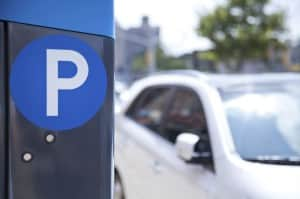Understanding No Parking, No Standing and No Stopping Signs — Know Where You Can Park!
Written by Mary Salatino

Ever found yourself confused over No Parking, No Standing and No Stopping signs? You're not alone! These signs might seem similar, but they each have distinct rules and purposes. Understanding the differences between different street parking regulations can save you from pricey tickets and keep traffic moving smoothly.
In this guide, we'll break down what each sign means, where you'll commonly find them and how to navigate these public parking rules like a pro.
No Parking Signs
A No Parking sign indicates you are prohibited from parking your vehicle in the designated area. While you can stop briefly, such as for loading or unloading, you must remain with your vehicle. Parking enforcement is aimed at ensuring that traffic flow is not impeded by parked vehicles.
The New York State Department of Transportation (NYSDOT) permits temporary stops for loading or unloading goods or passengers. However, you are not authorized to leave your vehicle unattended, even for a short period. Violating No Parking zones can result in fines, and rigorous enforcement helps maintain traffic efficiency and safety.
These signs are typically found in areas where stopping for extended periods could disrupt traffic. Common locations include:
- Commercial districts: To ensure clear access for deliveries and customer flow.
- Residential streets: To prevent long-term parking that could obstruct neighborhood traffic.
- Loading zones: Where brief stops are authorized for loading or unloading, but parking is prohibited.
No Standing Signs
A No Standing sign prohibits you from stopping your vehicle in the designated area, except for passenger pick up or drop off. Unlike No Parking signs, which allow temporary stops for loading or unloading, no standing zones impose stricter parking restrictions to ensure that traffic flow remains uninterrupted.
Leaving your vehicle unattended or stopping for any other reason can result in fines. Enforcement is typically strict, as these signs are to prevent congestion and ensure smooth traffic flow.
No Standing signage is commonly placed in areas where stopping even momentarily could cause significant disruption. Typical locations include:
- Busy intersections: Where any stopping could lead to traffic jams and delays.
- Near bus stops: To ensure buses can pick up and drop off passengers without obstruction.
- Commercial zones: Where quick turnover of loading and unloading areas is necessary for business operations.
No Stopping Signs
No Stopping signs prohibit any vehicle from coming to a complete stop in the designated area, except in cases of emergency or when directed by law enforcement. This restriction is more stringent than the other signs and is designed to keep traffic moving continuously.
Violating no stopping signage regulations can disrupt traffic flow and pose public safety risks, so it's crucial to adhere strictly to these signs.
No Stopping signs are typically placed in areas where stopping could create serious traffic issues or safety hazards. Common signage locations include:
- Busy highways and freeways: Where any stop could lead to dangerous congestion or accidents.
- Major intersections: To prevent blockages that could disrupt traffic signals and flow.
- Emergency routes: To ensure that emergency vehicles can pass without obstruction.
Regulatory Parking Signs
When navigating city streets, you'll encounter a variety of Regulatory Parking Signs, or Complex Parking Signs, each with its own set of detailed restrictions and conditions. Unlike some simpler signage, these signs often come with multiple laws and specifications that can be a bit confusing at first glance.
Regulatory Parking Signs are designed to provide detailed instructions about where, when and under what conditions you can or cannot park. They go beyond basic prohibitions to include various requirements such as time limits, payment obligations and exemptions for certain types of vehicles. Examples include:
- Metered signs: Indicate that you must pay to park, specifying the hours and rates.
- Time limit signs: Inform you of the maximum duration authorized for public parking.
- Permit-only signs: Restrict parking to those with specific permits.
- Commercial vehicle exemptions: Allow commercial vehicles to park or stop where others cannot.
These signs can seem complex due to the multiple conditions they outline. For example, a sign that reads “No Standing Except for Commercial Vehicles, Metered Parking, 3 Hour Limit, 10 a.m. to 4 p.m., Except Sunday” includes several layers of restrictions and allowances. It's essential to read such signs carefully to understand the specific laws that apply.
Key Tips:
- Read carefully: Ensure you fully understand all parts of the sign before leaving your car.
- Check for exemptions: Look for additional signs that might indicate exceptions or special conditions.
- Know local laws: Be aware that public parking regulations and requirements can vary by location.
By familiarizing yourself with Regulatory Parking Signs and their detailed instructions, you can avoid fines and park more confidently in urban areas.
Each type of signage plays a role in restricting areas where vehicles can impede traffic. These laws often include exception for authorized or handicapped vehicles. It's important to follow these restrictions to maintain safety on public roads.
Ready to Master the Rules of the Road?
Understanding parking signs is just one aspect of safe and responsible driving. Whether you're a new driver or just looking to refresh your knowledge, New York Safety Council offers detailed instruction and practical tips to help you navigate every aspect of driving with ease.
To truly enhance your skills behind the wheel, enroll in our driving courses today.
